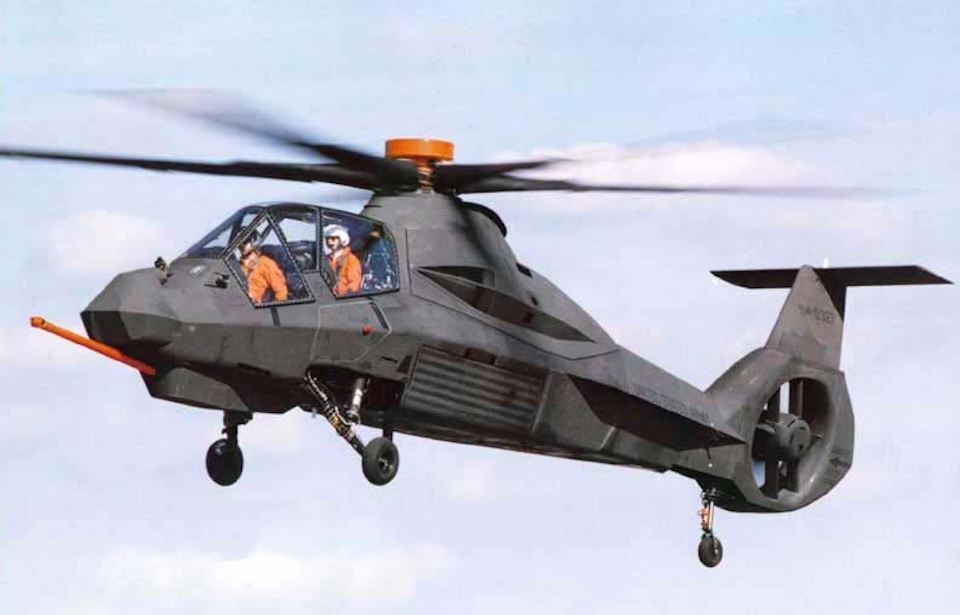The RAH-66 Comanche was a twin-turbine, two-seat armed reconnaissance helicopter that couldn’t meet the high expectations placed on it. With intended missions of armed reconnaissance, light attack, and air combat, the Comanche was fully equipped, extremely heavy, and overall, unsuccessful.
Response to Soviet threats
During the 1980s, the Soviet Union still posed a threat to the security and interests of the US. Believing that the Soviet Union was still funneling money into their own advanced military operations, the US Army began looking for a suitable replacement for their older, worn-down light attack and reconnaissance helicopters. As such, the Light Helicopter Experimental (LHX) program was born.
The intent was to replace the Vietnam-era helicopters, giving the old design an update. The ultimate goal was simple in theory but rather difficult in practice – build a single rotorcraft that would replace the Bell UH-1 Iroquois, Bell AH-1 Cobra, Hughes OH-6 Cayuse, and Bell OH-58 Kiowa helicopters.
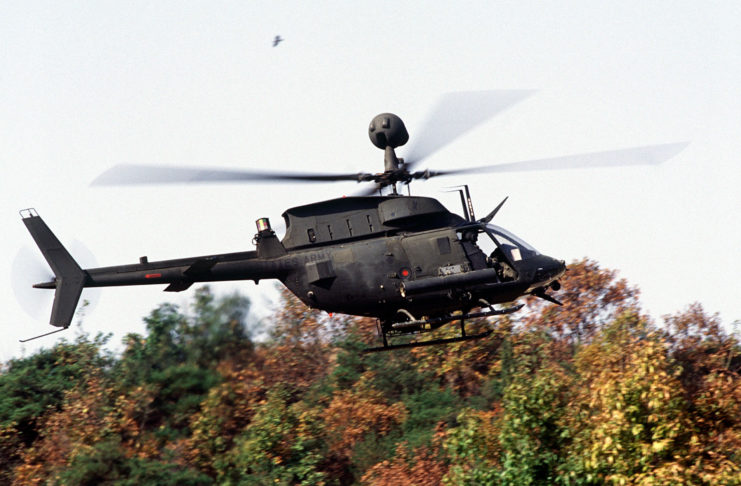
Program requirements
By the end of the decade, only two teams had met the proposal requirements and each was provided contracts to further develop their designs. Boeing-Sikorsky and Bell-McDonnell Douglas competed for approval, but it was Boeing-Sikorsky that was granted $2.8 billion to begin their production on six prototypes.
These new helicopters needed to survive longer than their predecessors, and so the new RAH-66 Comanche borrowed elements from fixed-wing stealth platforms, such as the Lockheed F-117 Nighthawk, replicating its angular radar-reflecting surfaces.
You can’t see me
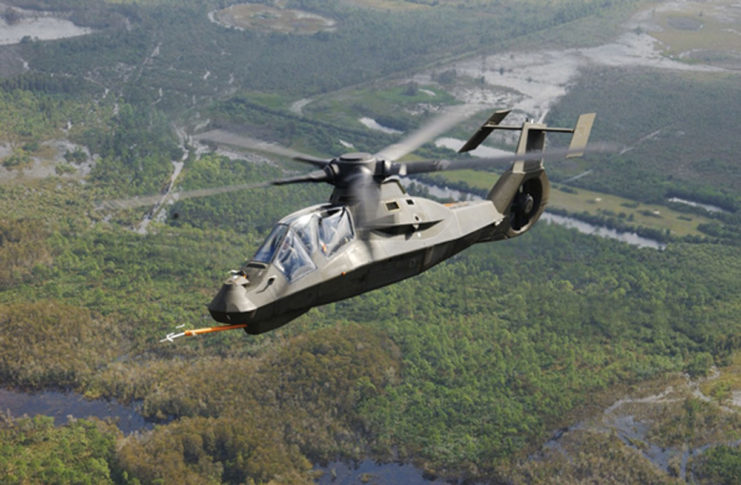
The RAH-66 Comanche prototypes were pretty souped-up. Their surfaces were made from radar-absorbing composite materials to lower the overall radar signature of the rotorcraft. Additionally, engine exhaust was funneled through the tail section to help reduce the overall infrared signature by 75 percent, and it is believed to have had an infrared cross-section 250 times smaller than that of the OH-58 Kiowa.
The blades of the RAH-66 Comanche were equipped with a graphite armor plating that could withstand heavy gunfire and produced half of the noise as that of a traditional helicopter. An additional Longbow radar could be mounted above the rotors to give the pilots critical situational awareness, and the RAH-66 Comanche could reach a speed shy of 200 miles per hour. Impressively but unnecessarily, it could also pull off agile loop-de-loops in the air.
Munitions galore
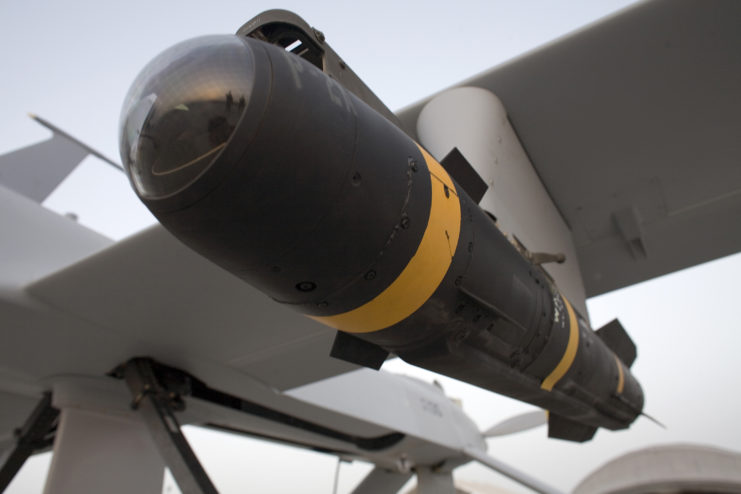
The munitions supplied on the RAH-66 Comanche prove it was intended to engage both air and ground targets while in targeted combat zones. Internally carrying its weapons, it was equipped with a retractable 20-mm XM301 Gatling canon and had space for 6 AGM-114 Hellfire missiles. In the case that air superiority was established, the RAH-66 Comanche could have an additional external pylon mounted that could equip another 8 AGM-114 Hellfires. As well, an additional 12 AIN-92 Stinger air-to-air missiles could also be mounted on external pylons.
Setback after setback
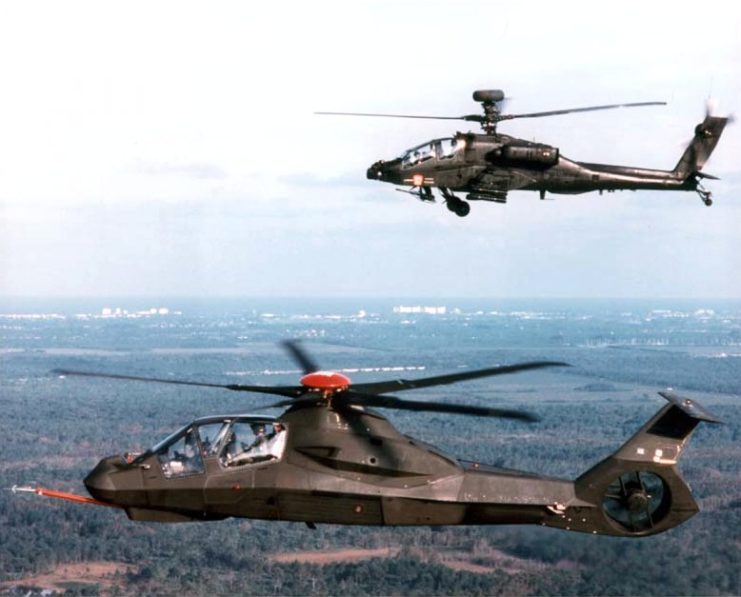
With all of these impressive specs, the RAH-66 Comanche had to meet high expectations. Unfortunately, nearly every system intended for use inside the rotorcraft was met with speed bumps. A number of bugs in the software meant that the quality of use was diminished and difficult and expensive to iron out. The helicopter had many disappointments, such as the 3-barrel cannon not being as accurate as expected, the target detection system not meeting expectations, and efforts to reduce overall weight being sluggish.
A change in direction
Following September 11, 2001, the US Army changed its defense priorities, and desires for reconnaissance and light attack platforms were replaced by a need for anti-terrorism campaigns. While still waiting for the RAH-66 Comanche to meet their expectations, they reduced their original order by almost half.
Scrapped
Two years after 9/11, the entire program was scrapped. After two decades worth of work and nearly $7 billion spent on the RAH-66 Comanche, the final product was halted after only two prototypes. Originally, the program was supposed to produce 1,213 helicopters, and so a half a billion-dollar penalty was issued for canceling the program.
Borrowed innovation
Despite being scrapped, the program is still generally seen as a success. Regardless of only two prototypes begin produced, the program provided invaluable information for the future development of rotorcraft. Many of the parameters for the RAH-66 Comanche can be spotted on other vehicles, like the UH-60 Black Hawk used in the raid on Bin Laden, which sports a tail section not typically seen on that type of aircraft. UH-60 Black Hawks are also extremely quiet, another detail likely borrowed from the RAH-66 Comanche program.
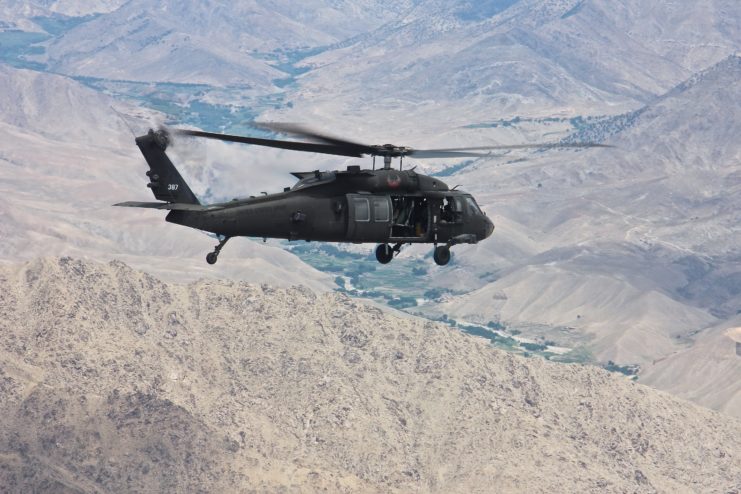
New! Want to become a trivia master? Sign up for our War History Fact of the Day newsletter!
Additionally, Sikorsky’s recent program, the S-97 Raider, is reminiscent of the company’s previous RAH-66 Comanche program, giving way to the idea that the rotorcraft was simply ahead of its time, and as there is continued progress in the development of new technologies, a rotorcraft can meet the expectations of the RAH-66 Comanche without the weight and unnecessary agility.
